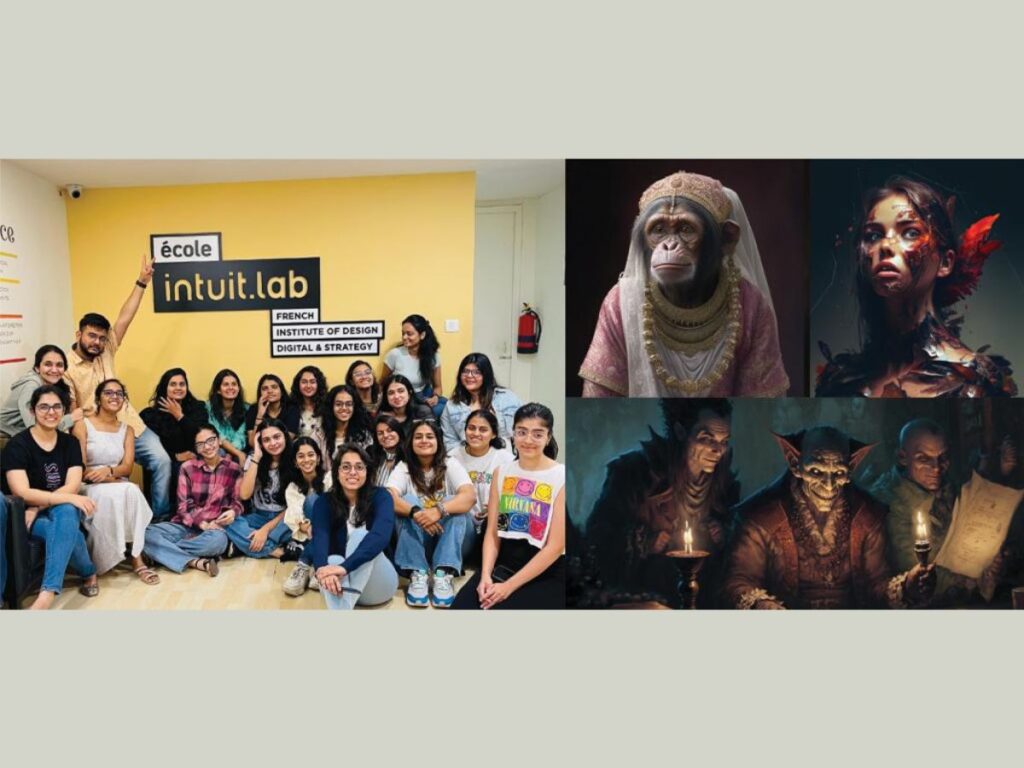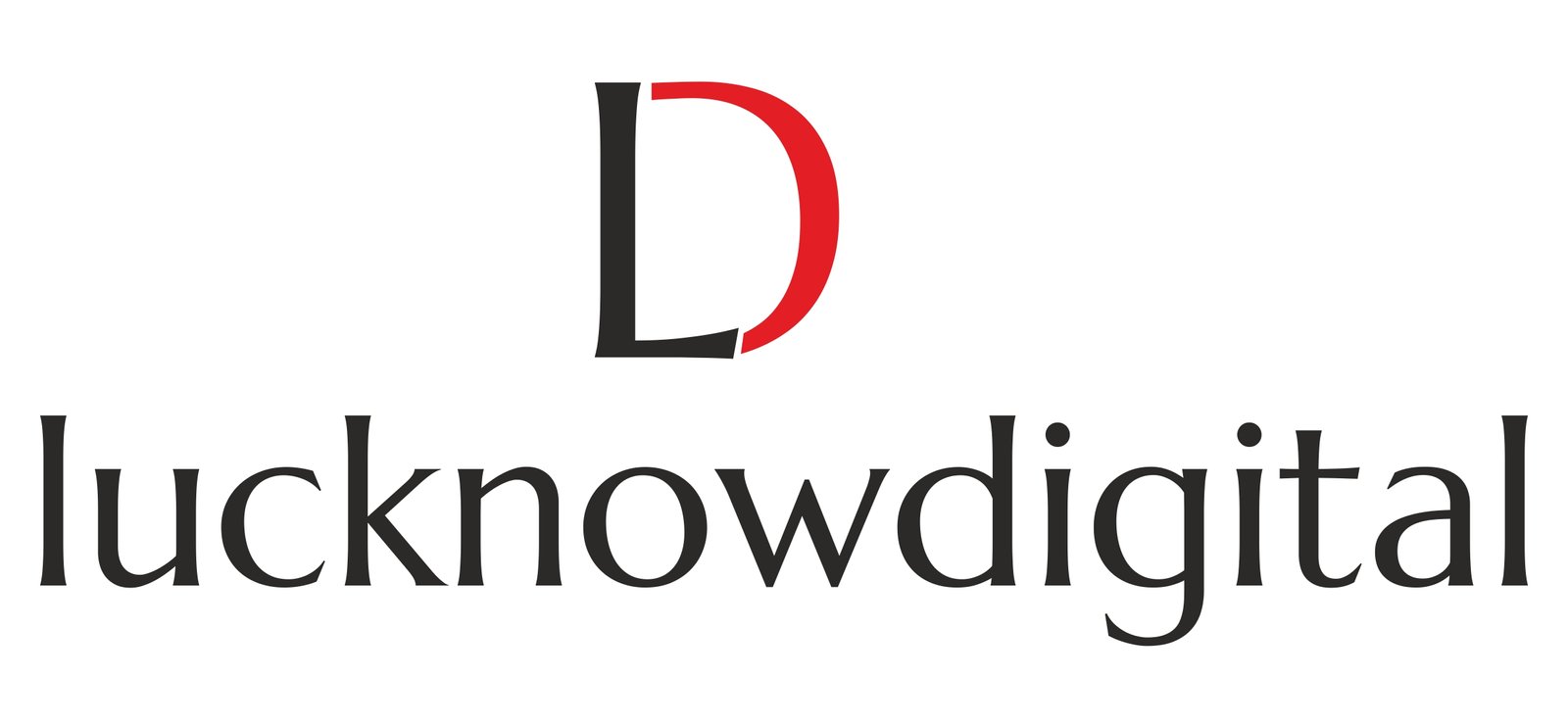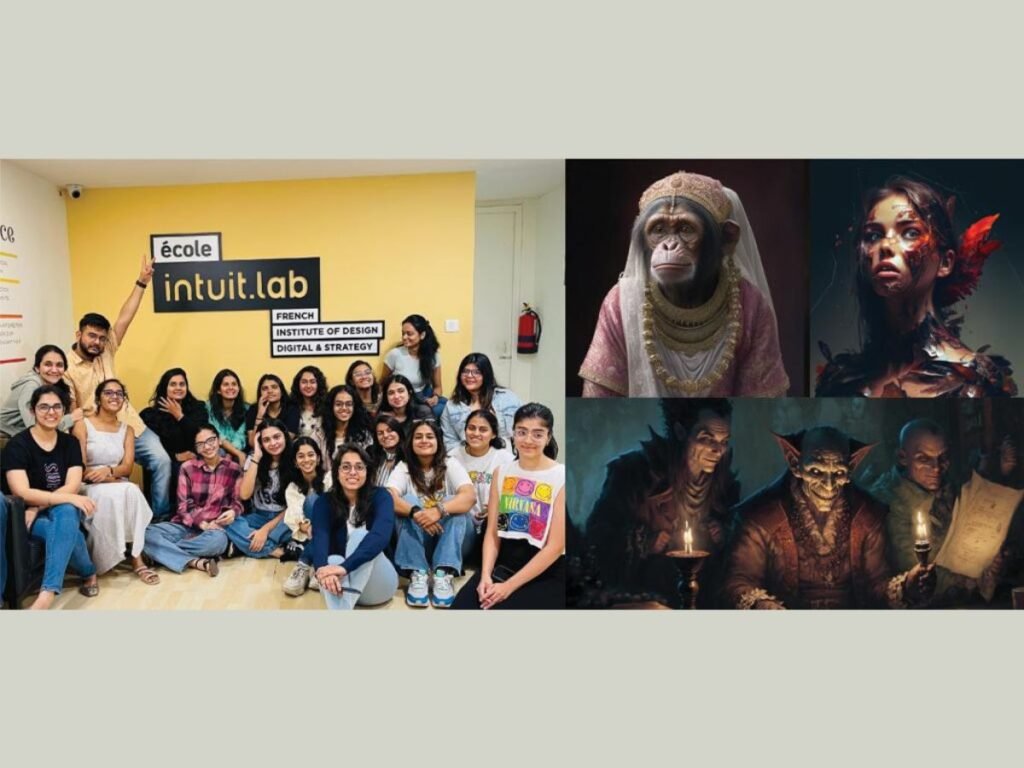
New Delhi (India), February 1: It’s no surprise that the recent rise of artificial intelligence has taken the design world by storm. After all, this technology presents incredible opportunities like never before. Anything you imagine will be easily turned into a reality in just a few seconds by AI-powered design softwares such as Dall-E and Midjourney. Whether it’s a polar bear skating on Saturn’s rings or your favourite TV characters, now reimagined as werewolves – AI will get it all done. This has opened up infinite possibilities for creative practitioners worldwide.
In fact, design institutions such as École Intuit Lab have already introduced AI learnings to their students to make optimum use of this groundbreaking technology. For e.g. – How to create customized and thought-provoking artwork using a software like Dall-E?
However, the increasing popularity of AI poses an important question: Will AI Replace Designers?
AI holds to its credit, a vast array of advantages, such as:
- Efficiency – AI algorithms can accurately process mountains of data at lightning speed, thereby drastically reducing the time and effort demanded by manual design tasks.
- Consistency – AI can guarantee cohesiveness and uniformity by ensuring that the designs remain consistent across varying platforms and mediums, resulting in a clean and professional appearance.
- Accessibility – AI tools make design much more accessible to those who lack technical design expertise, allowing anyone to create high-quality designs.
- Cost-savings – By automating several tasks, AI can significantly reduce the time and effort required during the design process, subsequently reducing costs for clients as well as businesses.
- Enhanced Data Analysis – AI algorithms can analyze data and patterns, providing designers with valuable insights into design trends and consumer preferences. This can help designers make data-driven decisions and create designs that are more likely to resonate with their target audience.
- Customization – AI technology possesses the power to generate designs based on individual preferences and needs. Designers can use this to create specific content that reflects a particular brand’s unique identity and tone of voice.
At the same time, we must understand that AI functions in the capacity of a virtual assistant to designers. Despite its remarkable abilities, artificial intelligence simply cannot replace the human touch as there are several drawbacks that need to be considered:
- Sub-par Quality – AI-generated designs may not always meet our quality standards and designers might have to invest more time and effort in editing the designs, which nullifies the speed and efficiency promised by AI.
- Bias and Prejudice – AI algorithms heavily rely on data. Therefore, they run the risk of perpetuating prejudice and discrimination in their designs. Sometimes, the artwork created might simply be biased, offensive, insensitive, or inappropriate.
- Limitations – While the possibility of customization exists, AI may not be able to produce designs that are original or stand out from the crowd.
- Inaccuracy – AI depends enormously on data. If the data provided is inaccurate, AI would present work that is outdated, irrelevant, or inappropriate. This, in turn, defies the purpose of using AI.
And lastly, one of the greatest reasons why we believe AI is no match for humans is – Creativity.
Artificial intelligence is data-dependent. It lacks originality and innovation. This is exactly where human intervention makes all the difference.
At École Intuit Lab, a French school of design and creative strategy, we are of the firm conviction that creativity isn’t only inherent. It is an important life skill that helps an artist establish their individual identity. With proper guidance and exposure, creativity can surely be taught and enhanced. That is why our esteemed faculty of industry experts aspires to encourage our students’ unbridled creative thinking. After all, they are the future of design. We aim to equip them with the required skills and knowledge to enable them to revolutionize the industry. And AI will undoubtedly play a big role in the process.
We offer a range of undergraduate and postgraduate design programmes in the fields of visual communication, game art and design, digital product design, advertising, and much more.
We have ensured that our contemporary curriculum is constantly evolving to incorporate new learnings and technologies.
You can see a glimpse of our design students’ wonderful creations using AI assistance at the Kula festival on top.
And if you’re somebody who’s passionate about design, our school would be the perfect platform for you to master the fundamentals, explore your imagination, and hone your skills. We are currently open for 2023 admissions. To know more, click here.
If you have any objection to this press release content, kindly contact pr.error.rectification@gmail.com to notify us. We will respond and rectify the situation in the next 24 hours.



